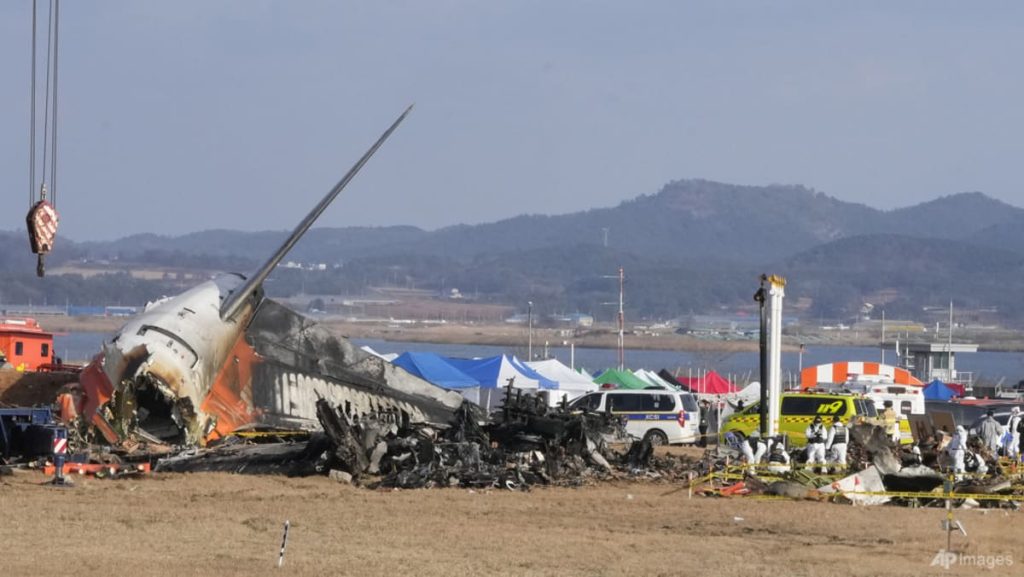The tragic Jeju Air crash at Muan International Airport on December 29th, 2024, serves as a stark reminder of the inherent risks associated with air travel. This devastating incident, which claimed the lives of 179 people, stands as South Korea’s worst aviation disaster in decades and the deadliest plane crash globally for the year. The Boeing 737-800 impacted a concrete fence upon landing with its front landing gear retracted, leading to the catastrophic loss of life. While the exact cause of the crash remains under investigation, the incident underscores the importance of rigorous safety protocols and ongoing efforts to enhance aviation safety worldwide.
The Muan airport tragedy, while horrific, pales in comparison to some of the most devastating aviation disasters in history. The 1977 Tenerife airport disaster, resulting from a runway collision between two Boeing 747s, remains the deadliest accident in aviation history, claiming the lives of 583 people. This tragic event, attributed to a combination of factors including dense fog, miscommunication, and pilot error, highlighted the critical need for improved air traffic control procedures and clearer communication protocols. The Tenerife disaster serves as a constant reminder of the devastating consequences that can arise from even seemingly minor lapses in communication and adherence to established procedures.
The September 11th, 2001 terrorist attacks, while not accidental, represent the single largest loss of life involving aircraft. Nearly 3,000 lives were lost when four commercial airliners, hijacked by Al-Qaeda operatives, were weaponized against American targets. The attacks, which targeted the World Trade Center towers, the Pentagon, and resulted in a downed aircraft in Pennsylvania, fundamentally reshaped global aviation security. The 9/11 tragedy led to a drastic overhaul of airport security measures worldwide, introducing stricter passenger screening, reinforced cockpit doors, and enhanced air marshal programs.
The 2024 aviation landscape, while marred by the Muan disaster, also witnessed other significant incidents. On January 2nd, a collision between a Japan Airlines passenger plane and a Japanese coast guard aircraft on a Tokyo runway resulted in the deaths of all five occupants of the coast guard plane. While all 379 passengers on board the Japan Airlines flight escaped before the aircraft was consumed by flames, the incident highlighted the potential dangers of congested airport environments and the need for meticulous ground control procedures. The incident, though resulting in a significantly lower loss of life compared to other events, underscores the importance of maintaining strict operational protocols on airport runways to prevent similar occurrences.
Beyond these specific incidents, the broader context of aviation safety in 2024 requires continuous scrutiny. While technological advancements and improved training protocols have contributed to a significant decline in accident rates over the decades, the potential for catastrophic events remains. Factors such as human error, mechanical failures, weather conditions, and security threats continue to pose challenges to safe air travel. The aviation industry must remain vigilant in its pursuit of enhanced safety protocols, incorporating lessons learned from past accidents to refine training, maintenance procedures, and emergency response strategies.
Moving forward, the aviation industry faces the ongoing task of refining safety measures and adapting to evolving challenges. This includes continued investment in advanced technologies to improve aircraft safety and air traffic management systems, as well as ongoing efforts to enhance human factors training to minimize the risk of human error. The lessons learned from the 2024 incidents, including the Jeju Air tragedy and the Tokyo runway collision, will be crucial in shaping future safety protocols and ensuring a safer environment for air travel. The commitment to continuous improvement and a steadfast focus on safety remain paramount in minimizing the risks associated with aviation and preventing future tragedies.

